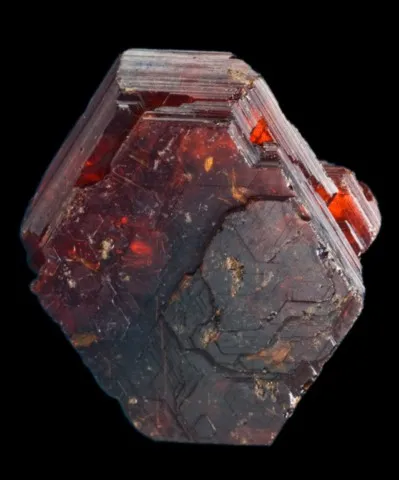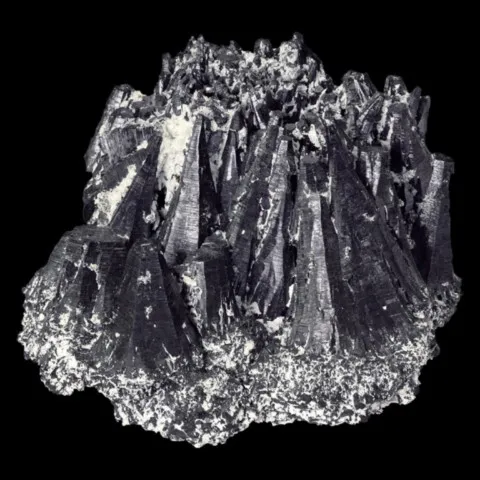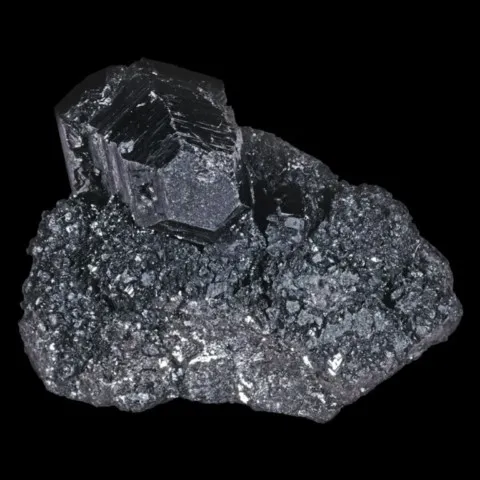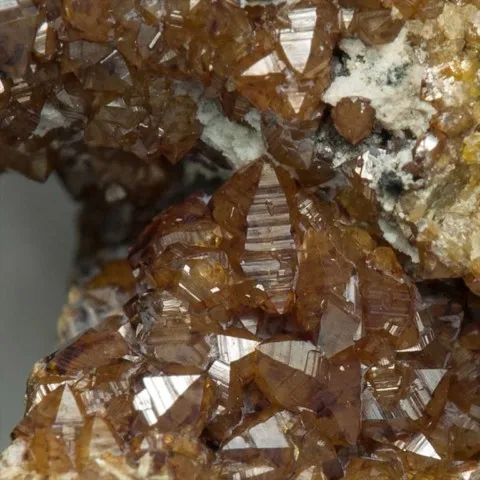WURTZITE
Class : Sulfides and sulfosalts
Subclass : Sulfides
Crystal system : Hexagonal
Chemistry : ZnS
Rarity : Quite common
Wurtzite is the hexagonal polymorph of sphalerite and, like it, is of hydrothermal origin. However, it is much less widespread than sphalerite and is mainly found in hydrothermal veins and telescoped deposits in the Andes. As in sphalerite, iron or manganese replace zinc in sometimes significant quantities. It was named in honor of the French chemist Charles Adolphe Wurtz, Professor at the University of Paris. Wurtzite crystals are rare and generally do not exceed 1.5 cm : they are hexagonal pyramids, frequently hemimorphic, sometimes short hexagonal or tabular prisms. Wurtzite commonly consists of fibrous or columnar masses, as well as concentrically banded concretions. Its color is brownish to dark reddish-brown and blackish-brown. It is an occasional ore of zinc.
Main photo : Wurtzite from Merelani Hills, Tanzania © Rob Lavinsky
Wurtzite in the World
Twinning
No twinning known for this mineral species.
Fakes and treatments
No fakes listed for this mineral species.
Hardness : 3.5 to 4
Density : 4 to 4.1
Fracture : Irregular
Streak : Brown
TP : Translucent
RI : 2.356 to 2.378
Birefringence : 0.022
Optical character : Uniaxial +
Pleochroism : None
Fluorescence : None
Solubility : Hydrochloric acid
Magnetism : NoneRadioactivity : None





